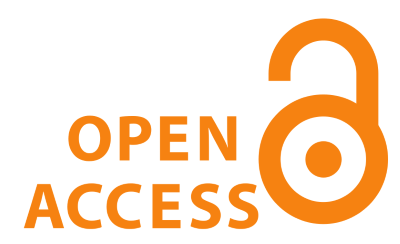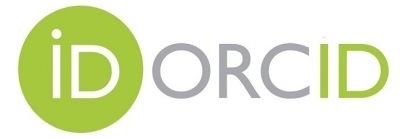"YouTube" Hastalara ve Yakınlarına PEG Kullanımı ve Evde Bakımı Konusunda Yardımcı Olabilir mi
DOI:
https://doi.org/10.5281/zenodo.15104959Anahtar Kelimeler:
Bakıcılar, Gastrotomi, Hastanın taburcu olması, Sosyal Medya, YouTubeÖzet
Amaç: Bu çalışma, gastrostomi bakımıyla ilgili YouTube videolarını, ana bileşenleri ve kullanılabilirlikleri açısından değerlendirerek, özellikle taburculuk sonrası bakımda bakım verenlerin karşılaştığı zorluklara odaklanmaktadır. Çalışmanın birincil amacı, bu videoların kalitesini ve yararlılığını değerlendirmek ve taburculuk sonrası gastrostomi bakımını yönetmede bakım verenlere etkili bir şekilde destek sağlayan kaynakları belirlemektir.
Materyal ve Metot: Belirli kriterlere dayalı olarak YouTube arama sonuçlarının ilk beş sayfası incelendi. 19-29 Ocak 2023 tarihleri arasında, "peg tube," "percutaneous endoscopic gastrostomy tube," "gastrostomy tube," "g-tube," ve "stomach tube" ifadeleriyle ilgili arama terimleri kullanılarak videolar analiz edildi. Her video, ana kriterlere 2 puan, alt kriterlere ise 1 puan verilerek bir puanlama sistemiyle değerlendirildi. Ana kriterleri karşılayan ve 13 veya daha yüksek puan alan videolar yararlı olarak kabul edildi.
Bulgular: Toplamda 500 video incelendi, bunlardan 219'u (%43) dahil edilme kriterlerini karşıladı ve 101 video yararlı olarak sınıflandırıldı. Yararlı videolar genellikle daha yüksek izlenme sayılarına, daha uzun süreye ve daha yüksek puanlara sahipti. Bireysel kaynaklardan gelen videoların yararlı olarak sınıflandırılma olasılığı daha düşüktü. Toplam video puanı ile izlenme sayısı, günlük izlenme sayısı, Video Güç İndeksi (VPI) ve genel puan gibi metrikler arasında anlamlı korelasyonlar tespit edildi ve gözlemciler arası güçlü bir uyum gözlemlendi.
Tartışma ve Sonuç: İzleyici tercihleri, video etkinliği ile güçlü bir şekilde ilişkilidir ve YouTube'un PEG bakımı için değerli bir kaynak olmasını sağlamak adına etkili arama tekniklerinin önemini vurgulamaktadır. Çalışma, kaynak güvenilirliği ve izleyici katılımının kritik rolünü öne çıkararak, PEG'in güvenli uzun vadeli enteral beslenmeyi desteklerken, taburculuk sonrası bakımda bakım verenlere önemli sorumluluklar yüklediğine dikkat çekmektedir.
Referanslar
Who, Joint, and FAO Expert Consultation. Diet, nutrition and the prevention of chronic diseases. World Health Organ Tech Rep Ser. 2003;916:1-149.
Gauderer MW, Ponsky JL, Izant RJ. Gastrostomy without laparotomy: a percutaneous endoscopic technique. J Pediatr Surg. 1980;15:872-875.
Best C. Percutaneous endoscopic gastrostomy feeding in the adult patient. Br J Nurs. 2009;18:724-729.
Sezer RE, Ozdemir Koken Z, Senol Celik S. Home percutaneous endoscopic gastrostomy feeding: difficulties and needs of caregivers, qualitative study. JPEN J Parenter Enteral Nutr. 2020;44:525-533.
Aktoz F, Tercan C, Dagdeviren E, Kaya C. Comparison of laparoscopic hysterectomy videos on YouTube and WebSurg platforms in terms of educational reliability and quality. J Gynecol Obstet Hum. 2022;51:102435.
Fischer J, Geurts J, Valderrabano V, Hügle T. Educational quality of YouTube videos on knee arthrocentesis. J Clin Rheumatol. 2013;19(7):373-6
Goobie GC, Guler SA, Johannson KA, Fisher JH, Ryerson CJ. YouTube videos as a source of misinformation on idiopathic pulmonary fibrosis. Ann Am Thorac Soc. 2019;16(5):572-9.
Roche V. Percutaneous endoscopic gastrostomy: clinical care of PEG tubes in older adults. Geriatrics (Basel, Switzerland). 2003;58:22-26.
Angus F, Burakoff R. The percutaneous endoscopic gastrostomy tube: medical and ethical issues in placement. Am J Gastroenterol. 2003;98:272-277.
Gottrand F, Sullivan PB. Gastrostomy tube feeding: when to start, what to feed and how to stop. Eur J Clin Nutr. 2010;64:S17-S21.
Mark I, Hey G, Colliander R, McCracken B, Casauay J. The role of G-tube placement for neurologic injury patients. Biomed Sci Clin Res. 2022;1:1.
Nishide N, Ono H, Kakushima N, et al. Clinical outcomes of endoscopic submucosal dissection for early gastric cancer in remnant stomach or gastric tube. Endoscopy. 2012;44:577-583.
Kozanhan B, Tutar MS, Arslan D. Can “YouTube” help healthcare workers for learning accurate donning and doffing of personal protective equipments? Enferm Infecc Microbiol Clin. 2022;40:241-247.
Azer SA, AlGrain HA, AlKhelaif RA, et al. Evaluation of the educational value of YouTube videos about physical examination of the cardiovascular and respiratory systems. J Med Internet Res. 2013;15:e2728.
Azer SA. Can “YouTube” help students in learning surface anatomy? Surg Radiol Anat. 2012;34:465-468.
Azer SA. Understanding pharmacokinetics: are YouTube videos a useful learning resource? Eur Rev Med Pharmacol Sci. 2014;18.
Azer SA, AlKhawajah NM, Alshamlan YA, et al. Critical evaluation of YouTube videos on colostomy and ileostomy: can these videos be used as learning resources? Patient Educ Couns. 2022;105:383-389.
Ferhatoglu MF, Kartal A, Ekici U, Gurkan A. Evaluation of the reliability, utility, and quality of the information in sleeve gastrectomy videos shared on open access video sharing platform YouTube. Obes Surg. 2019;29:1477-1484.
Demirci A, Halil B. YouTube is an unreliable source of information about delayed ejaculation treatment. Urol J. 2023;39:15603231204077.
DeLegge MH, Salzman J, Robson K. Gastrostomy tubes: placement and routine care. UpToDate. January 25, 2022.
Haslam K, Doucette H, Hachey S, MacCallum T, Zwicker D, Smith-Brilliant M, Gilbert R. YouTube videos as health decision aids for the public: an integrative review. Can J Dent Hyg. 2019;53(1):53.
Stevenson FA, Kerr C, Murray E, Nazareth I. Information from the internet and the doctor-patient relationship: the patient perspective–a qualitative study. BMC Fam Pract. 2007;8:1-8.
Laugesen J, Hassanein K, Yuan Y. The impact of internet health information on patient compliance: a research model and an empirical study. J Med Internet Res. 2015;17:e143.
Gokcen HB, Gumussuyu G. A quality analysis of disc herniation videos on YouTube. World Neurosurg. 2019;124:e799-e804.
Curran V, Simmons K, Matthews L, Fleet L, Gustafson DL, Fairbridge NA, Xu X. YouTube as an educational resource in medical education: a scoping review. Med Sci Educ. 2020;30:1775-1782.
Coskun BN, Yagiz B, Chalil EG, Dalkılıç E, Pehlivan Y. The usefulness and reliability of English-language YouTube videos as a source of knowledge for patients with familial Mediterranean fever. PeerJ. 2024;12:e16857.
Duncan I, Yarwood-Ross L, Haigh C. YouTube as a source of clinical skills education. Nurse Educ Today. 2013;33:1576-1580.
Burke SC, Snyder S, Rager RC. An assessment of faculty usage of YouTube as a teaching resource. Internet J Allied Health Sci Pract. 2009;7:8.
Murugiah K, Vallakati A, Rajput K, et al. YouTube as a source of information on cardiopulmonary resuscitation. Resuscitation. 2011;82:332-336.
Zengin O, Onder ME. Educational quality of YouTube videos on musculoskeletal ultrasound. Clin Rheumatol. 2021;40:4243-4251.
Li M, Yan S, Yang D, Li B, Cui W. YouTube™ as a source of information on food poisoning. BMC Public Health. 2019;19:1-6.
Muoki D. Patient education on PEG tube care at home. Nursing. 2023;53:11-12.
Kalayci M, Cetinkaya E, Suren E, Yigit K, Erol MK. Are YouTube videos useful in informing patients about keratoplasty? Semin Ophthalmol. 2021;36(7):Taylor & Francis.
Satici MH. Evaluation of YouTube Videos for Learning Interfascial Plane Blocks. Med Records. 2024;6(3):317-23.
İndir
Yayınlanmış
Nasıl Atıf Yapılır
Sayı
Bölüm
Lisans
Telif Hakkı (c) 2025 MEHES JOURNAL

Bu çalışma Creative Commons Attribution 4.0 International License ile lisanslanmıştır.










